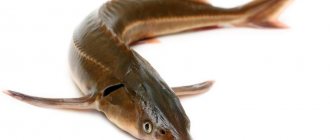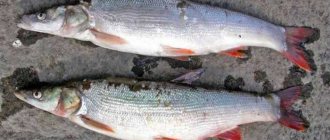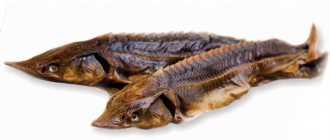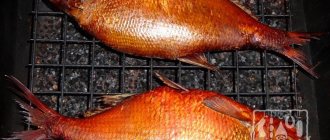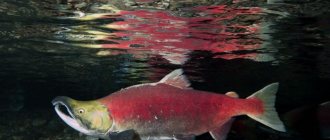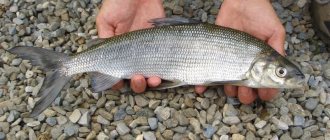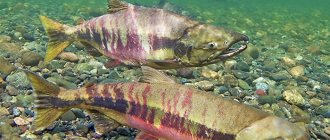General information
The second name for vomer is selenium. It comes from the Greek “selene”, which means “moon”. Indeed, the fish has a remarkable appearance; it can become transparent or translucent under certain lighting, which resembles an Earth satellite.
Important! Selena should not be confused with the real sunfish, in Latin Mola mola.
The vomer is of limited commercial importance. During the year it is caught in small quantities, only a few tens of tons. Selenium is also popular as an object of sport and recreational fishing, and is regularly found in catches in all habitats.
Where does it live?
Vomer lives in the Atlantic Ocean and the eastern Pacific Ocean. The fish is most abundantly found off the coast of West Africa, Central America, in the California region, the waters of Ecuador and Peru, and in other frequent tropical climate zones.
For reference! Vomer is not found in Russia. Fish is imported to us from countries where they fish.
Vomer is a schooling fish. She chooses coastal waters with depths not exceeding 80 meters. Loves areas with sandy or mixed sandy-silty soil. Most often it occupies the bottom horizon, but rises into the water column and towards the surface itself.
You can often see schools of vomer mixing with related representatives of the ichthyofauna - sardinella, mackerel and bumper. Such multimillion-dollar schools attract large numbers of predatory fish and mammals.
Description
Black Sea needle fish
The vomer has a flat, almost rounded body. The head is large, occupying about a third of the fish’s body. The forehead is high, steeply sloping. The mouth is small, oblique, the lower jaw is directed upward. The eyes are medium. The lateral line goes around the pectoral fin. There are no bony scutes.
The pelvic fins are very small, reduced in adults. The pectorals are located behind the gill cover. There are two fins on the back, the first one consists of 8 separately sitting spines. The tail is forked, on an elongated stem.
The body color is silver. Depending on the type of fish, it may have a bluish or olive tint. The back is darker than the belly. Particular attention is drawn to the vomer's ability to camouflage. This is achieved due to its unique structure. If you look at an individual at an angle of about 45 degrees, it almost becomes invisible. This feature allows it to better hide from the eyes of the enemy, because it has been scientifically proven that a predator attacks its prey precisely diagonally.
Smoking methods
Smoked vomer is a real delicacy that no one can resist. The meat of this fish is very tender. The finished smoked meats are aromatic, regardless of how the smoked meats are prepared.
Carcass preparation
Before you start smoking, you need to prepare the product. First, it defrosts. You cannot use any special devices to speed up defrosting, as this will negatively affect the taste of the finished product.
Be sure to wash thoroughly, then remove the insides. You should not cut off the head, because then smoking the fish will be inconvenient.
Cold smoking
Behavior
The vomer is most active after dark. During the daytime, he likes to rest in the near-bottom horizon. Juvenile fish often enter river mouths into fresh water. Adults prefer the open sea, but try not to go more than 100 meters from the shore.
The basis of the womer's diet is bottom invertebrates. These can be shrimp, crustaceans, crabs, sea worms. However, adult individuals that have reached sizes close to maximum willingly eat small fish, although they are not considered pronounced predators.
Womer spawns near its places of residence. It lays its eggs on the sandy bottom, so the eggs mature in the water column, since they are not attached to anything.
Vomer stays in packs
They are actively eaten by other representatives of the ichthyofauna, which explains the low survival rate. However, nature has taken care of preserving the species - Selena females are very fertile, and after birth, the young are immediately able to feed on the smallest zooplankton on their own.
Vomer fish. Description, features, types and habitat of the vomer
Vomer is a fish called the moon in Russia. This is a trademark. However, the true moon fish is considered a commercial fish only in Asia; it reaches 4.5 meters, which is the maximum among bony fish.
The length of the vomer does not exceed 60 centimeters. The confusion stems from the Greek name of the genus of the hero of the article - selene, which translates as “moon”. The genus is part of the horse mackerel family, otherwise it is classified in the order Perciformes.
Description and features of the vomer
In all perciformes, the pelvic fins are located under the pectoral fins. This also applies to vomer. However, its pelvic fins are reduced, or in other words, underdeveloped. Therefore, the belonging of the fish to perciformes is poorly visible.
Vomer's pectoral fins are also unusual. They are located behind the gill cover, located above the abdominal ones. The outgrowths are long, pointed at the ends. Speaking about other features of the hero of the article, we mention that:
- The womer has a tall and flat body. Its height is almost equal to its length.
- At the tail, the fish's body narrows sharply. After the thin isthmus there is an equal-lobed tail.
- The lines of the fish's back and belly appear sharp.
- The vomer has a convex, high forehead.
- The head of the hero of the article occupies about a quarter of the body.
- The fish's mouth is oblique, directed upward. The corners of the mouth, accordingly, are lowered down. This gives the fish a sad expression. The proof is the vomer in the photo .
- The lateral line of the hero of the article is arched, curved above the pectoral fin.
- The vomer's spine follows the shape of the lateral line. In most fish, the skeletal column is straight.
- The small scales of the hero of the article are painted silver. The back is slightly darkened.
The reduced fins of the fish are transformed throughout life. In young womers, the abdominal projections are developed. The second fin on the back is also clearly visible. In adult vomeres, several short spines remain instead.
Types of vomer
For most, the types of the hero of the article are smoked vomer, dried vomer , fried. The fish is commercial and considered dietary. Fat in meat is only 4%, and protein is more than 20%. The quality of the meat is partly influenced by where the vomer is found . Pacific fish have the densest and at the same time softest meat.
Ichthyologists offer their own, non-gastronomic classification of vomers. They are divided into large Atlantic and small Pacific. The latter include brevort, Mexican and Peruvian selenium.
In the latter, the second back fin is classically reduced with age. The Mexican womer and brevort retain both dorsal fins throughout their lives. The first is presented in the form of a long beam.
All Pacific species are scaleless. This simplifies the preparation of vomer . It’s nice to eat dried, smoked, or baked fish without plates getting stuck in your teeth.
Atlantic vomeras include African, common and Western Atlantic. The last one is the largest in the family. With a 60-centimeter length, the fish weigh 4.5 kilograms. The mass of representatives of an ordinary species does not exceed 2.1 kilos. The maximum length of the fish is 48 centimeters.
The smallest of the Atlantic womer is the African one. Its length is 38 centimeters and its weight is 1.5 kilograms. Smoking the vomer species, like others, changes the color of the fish. From silver it becomes yellow-brown.
Behavioral characteristics and habitat of fish
All vomer are schooling fish. They stay near the bottom at a depth of 80-50 meters, sometimes rising into the water column. The geographic habitat depends on the type of fish. Atlantic individuals are graded as follows:
- Western Atlantic individuals are found along the coasts of Canada, Argentina and the United States.
- The common womer is common in the coastal waters of Canada and Uruguay.
- The range of the African species extends from Portugal to Africa.
The distribution areas of Pacific species are clear from their names. Distinguished by the quality of their meat, it is the Pacific vomer that is actively caught. The Peruvian species is considered the most valuable. Ecuador had to temporarily ban its fishing. Large specimens have ceased to be found and the number of flocks has decreased.
Young womer live in desalinated waters close to the shore, entering river mouths. Adult fish gather in schools a couple of hundred meters away from the shore. The main thing is that the bottom is muddy. There may be a significant admixture of sand.
The hero of the article is a night fish. During the day, womer rest in the water column. At night, predators get food. In the absence of light, the glow of the vomer itself is clearly visible. They shine like the moon.
Representatives of scaleless species appear translucent. If you look at the fish at a 45-degree angle from the front or back, it is invisible. This is a defense mechanism against predators who want to feast on the vomer.
Offenders often attack at a 45-degree angle. The transparency effect is due to the presence of nanoscopic, elongated crystals in the skin of the hero of the article. They polarize light.
Belonging to the horse mackerel family, the vomer, like its other representatives, is a predator. The appetites of the hero of the article depend on size. Small vomer feed on crustaceans and shrimp. Larger fish eat the fry. Sometimes vomers feast on sea worms. Sunfish are not found outside salt waters.
Reproduction and lifespan
Vomers are viviparous fish. In other words, animals do not lay eggs, but produce ready-made fry. Their parents refuse to protect them. From the first days of life, the offspring are left to their own devices.
This has both benefit and harm. Vomer fish are forced to quickly adapt to the realities of the ocean. Survival of the fittest, with quick reactions. This strengthens the population. However, its numbers are suffering. 80% of vomer fry die in infancy. The exception is aquarium broods.
However, in captivity, vomer breed reluctantly. Unlike the moonfish, with which the vomer often shares a name, the hero of the article lives a maximum of 10 instead of 100 years. In the wild, individuals rarely “cross” the 7-year threshold.
Varieties
Today, ichthyologists identify seven species, four of which live in the Atlantic Ocean, and three in the Pacific. In appearance, these fish differ somewhat from each other, especially at a young age, in the shape and size of the dorsal fin.
So, there are the following types of vomer:
- common selenium, Selene vomer - inhabits the waters of the western coast of the Atlantic Ocean, from Canada to Uruguay;
- Western Atlantic selenium, Selene setapinnis, is native to the entire western Atlantic coast, from Canada to Argentina.
- Caribbean sunfish, Selene brownii - lives in the waters of the Atlantic Ocean from Mexico to Brazil;
- African sunfish, Selene dorsalis - found in large numbers along the east coast of the Atlantic, from Portugal to South Africa;
- Mexican Selena, Selene orstedii - lives along the east coast of the Pacific Ocean, from California to Mexico;
- Selene Brevoortii - found in the Pacific Ocean from Ecuador to Mexico;
- Peruvian Selena, Selene peruviana - found from California to Peru.
For reference! West Atlantic selenium is the largest among the vomerians. Grows up to 60 cm in length.
The latter is of greatest commercial importance and is caught in large numbers off the coast of Ecuador. The high demand for this fish in Eastern Europe has led to its overfishing and, as a result, a decline in population.
Population and species status
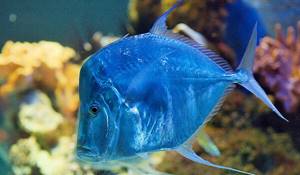
Vomer fish are considered to be very adapted to ocean life. From birth they try to survive. This is what keeps them “afloat”: fish learn to hunt correctly (in the dark in order to get more food), hide from predators (they even use solar cures for this) and live in schools (which allows them to correctly coordinate movement and swim in the right direction). However, increased selenium fishing in recent years puts their normal existence under serious threat. By catching large fish, people leave only their small representatives in the ocean. The fry are more susceptible to attacks from natural enemies and are not as adapted to the harsh conditions of the ocean. The result is the extermination of the vomer.
There is no exact data on the number of vomer in certain regions. The fact is that it is impossible to count large schools of fish. But despite this, the authorities of some states, having assessed the situation of selenium fishing, introduced restrictions and even a ban on catching these individuals. For example, in the spring of 2012, it was prohibited to catch Peruvian womers in Ecuador. This happened due to the fact that representatives of nature conservation noticed a decrease in the number of individuals (it became impossible to catch large Peruvian seleniums, which were previously introduced into these waters in large numbers).
Interesting fact: Artificial habitat conditions for vomer are increasingly being created. In this way, producers save money on the fishing process, maintain the number of fish in their natural habitat, and allow all meat lovers to continue to enjoy their taste.
Despite the increased catch of vomer, they are not given conservation status. Temporary catch restrictions are in place regularly in many countries. In just a few months, the fry manage to get stronger and adapt to the harsh conditions of their habitat. Thus, the population is developing steadily and its near extermination is not expected.
Vomer fish are unusual in body structure and color, capable of surviving under any conditions. They can become almost invisible and obtain food from under the mud. Only man is afraid of this fish. But even despite active fishing, seleniums do not cease to maintain the size of their population. To meet such fish with your own eyes, it is absolutely not necessary to go to the Atlantic coast. You can admire attractive and unusual vommers in aquariums.
Beneficial features
Vomer meat has a low fat content, about 4%, and a high percentage of protein, under 20%. It also contains a sufficient amount of phosphorus and calcium. Therefore, this fish often appears in the diet of athletes, especially in strength sports such as bodybuilding, weightlifting, powerlifting, arm wrestling and others.
Advice! There are definitely benefits from using fish, and especially lean vomer meat, rich in protein!

Smoked vomer is an incredibly tasty dish, especially with beer.
In order to preserve all the beneficial microelements and components of vomer meat as much as possible, it is advisable to bake it in the oven or cook it on the grill. In addition, residents of Ecuador, Peru and other South American countries love to fry selenium, as evidenced by numerous recipes from the peoples of this region.
In our country, vomer is best known as a beer snack. It is served dried, dried, and less often smoked. In terms of its gastronomic qualities, it can compete with the famous vobla and saberfish. You can try the fish fried or baked in a restaurant.
How to deliciously fry in a frying pan
When fried, vomer meat turns out to be extremely tender and unusually juicy, and the fish is very easy to prepare.
We will need the following products:
- fish – 3 pcs.;
- chicken egg – 1 pc. (for those who prefer dietary nutrition, you can take 2 quail);
- breadcrumbs or flour – 50 g;
- a mixture of herbs;
- salt;
- garlic – 2 heads;
- vegetable oil.
On average, the weight of three carcasses will be 1.5 kg. Remember that the fish has a large head and there will be a lot of waste.
Cooking process:
- Clean the fish from the skin and entrails, cut the fillet into small pieces 7–10 cm wide.
- Using a whisk, beat the egg until light foam forms.
- Heat oil in a frying pan. Many chefs suggest adding minced garlic cloves and dried herbs at this stage. They will let the juice into the oil, and the fish will be aromatic, with an interesting flavor.
- Dip each piece of vomer in the egg and breadcrumbs, don’t forget to add salt. Fish meat itself has a sweetish taste, so
- Fry portions in a frying pan without a closed lid to get a tasty, crispy crust. Frying time - 5 - 7 minutes.
Fried vomer fish prepared according to this recipe turns out juicy and retains its beneficial properties. The calorie content of the dish is 140 Kcal.
Is vomer poisonous?
There are many misconceptions about vomer. One of them is that these fish are considered poisonous. However, there are still no facts confirming this information. Therefore, selenium can be eaten without restrictions.
***
Vomer is a very interesting sea fish. It attracts attention both with its appearance, which is immediately memorable, and with its high taste. And although this underwater inhabitant does not live in our reservoirs, all fishermen, especially beer lovers, know about it.
Social structure and reproduction
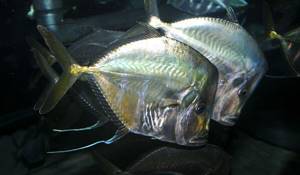
Photo: A pair of Vomers
Selenium-like representatives are quite prolific fish. At one time, a female womer is capable of producing about a million eggs. After reproducing the offspring, the “loving” mother sets off on a further voyage. Neither the male nor the female takes care of the eggs. However, they are not attached to any surface. Such masses of caviar often become a complete meal for large fish. These factors explain the fact that out of a million unborn eggs, only about two hundred fry are born.
Selenium cubs are very nimble and intelligent creatures. Immediately after their birth, they adapt to the environment and go to collect food. The fry feed mainly on the smallest zooplankton. No one helps them with feeding.
Interesting fact: Thanks to their translucent body, small size and agility, newborn vomer successfully hide from more massive predators.
The absence of "maternal instinct" is necessary so that fish can quickly adapt to the harsh conditions of the ocean. The strongest survive - only those who managed to hide from the predator in time and find food. It is because of this that 80% of selenium larvae die. The situation is different in artificial living conditions. Most vomer survive in aquariums and specialized reservoirs. This is explained by more favorable living conditions and the absence of serious predators.
